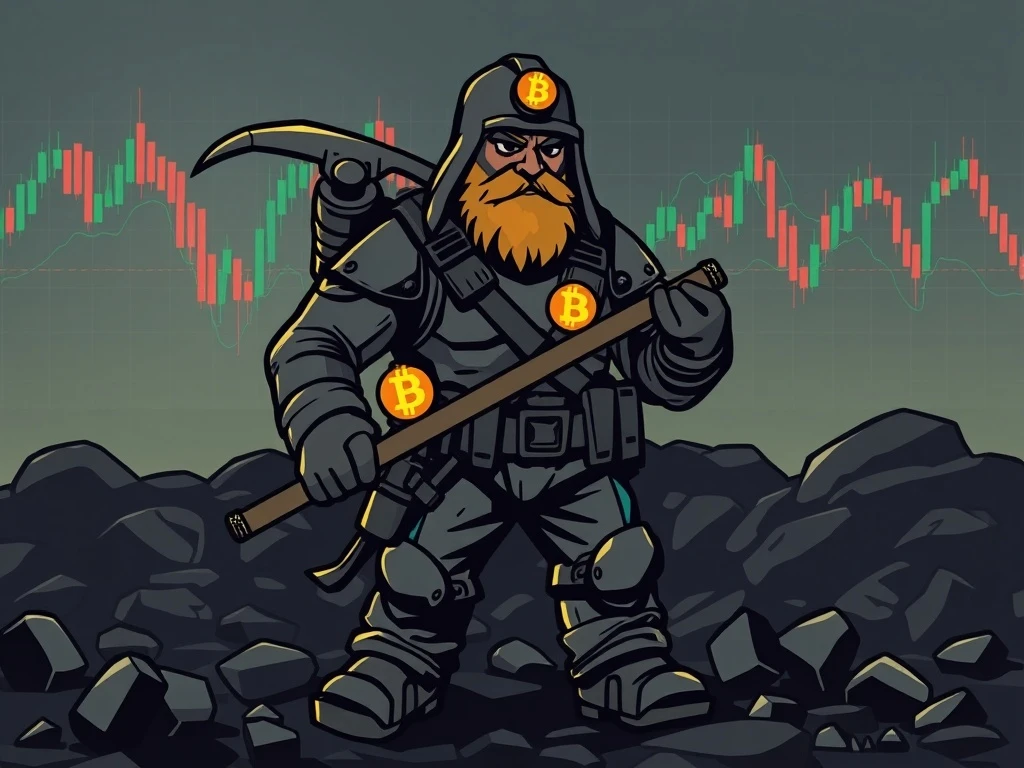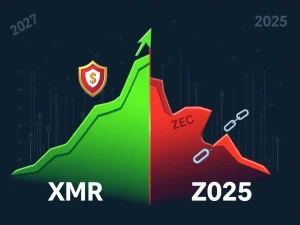Bitcoin Miners’ Astounding ‘Hodl’: Satoshi-Era Wallets Sell Just 150 BTC Amid Record Highs

Are you watching the crypto markets closely? If so, you’ve likely seen Bitcoin reaching new all-time highs. But what’s truly astonishing isn’t just the price action, it’s the unexpected behavior of Bitcoin miners. Instead of cashing in big, many are doubling down on their reserves, signaling a profound shift in market dynamics. This unprecedented ‘hodl’ trend, particularly among the oldest participants, is sending ripples through the industry.
Why Are Bitcoin Miners Refusing to Sell?
In a move that defies historical patterns, Bitcoin miners are demonstrating rare behavior. Despite BTC hitting repeat all-time highs in 2025, large-scale miners are actively increasing their Bitcoin reserves rather than taking profits. Since April, miners have collectively added a remarkable 4,000 BTC to their holdings. This goes against the common expectation that miners would sell off their newly minted coins, especially when prices are soaring.
According to recent research from the onchain analytics platform CryptoQuant, this ‘hodl’ trend is pervasive. Even though the daily revenue for miners has seen a significant dip, falling to $34 million on June 22 – the lowest since April 20, 2025 – they are choosing to hold. This decline is attributed to lower transaction fees and the recent pullback in Bitcoin’s price, making miners ‘extremely underpaid’ relative to market conditions. Despite these financial pressures, their resolve to hold onto their assets remains strong.
The Satoshi-Era Shift: A Historic ‘Hodl’ Movement
Perhaps the most compelling aspect of this phenomenon involves the legendary Satoshi-era miners. These are the earliest participants in the Bitcoin network, holding coins mined during its nascent stages. Historically, these ‘old guard’ miners have been known to move their coins after strong price rallies, often signaling a potential market top. However, 2025 tells a dramatically different story.
CryptoQuant’s report highlights that Satoshi-era miners have sold a mere 150 Bitcoin so far in 2025. This figure stands in stark contrast to the nearly 10,000 Bitcoin they offloaded throughout 2024. This dramatic reduction in selling pressure from such significant and historically influential holders suggests a deep-seated conviction in Bitcoin’s long-term value, breaking with decades of established tradition.
Decoding BTC Price Action: Underpaid Yet Unwavering
The current BTC price action, while impressive, hasn’t translated into proportional gains for miners. As CryptoQuant notes, miners are currently the most underpaid they have been in the last year. The Bitcoin network’s hashrate, a measure of its computational power, has also seen a 3.5% decline over the past ten days. This represents the largest drawdown since July 2024, following the most recent block subsidy halving event which cut miner revenue per block by 50%.
Despite these challenges – reduced revenue and a declining hashrate – miner selling remains muted. Total miner outflows have plummeted from a daily peak of 23,000 BTC in February 2025 to roughly 6,000 BTC today. There have been no days with extremely high outflows since February, and Bitcoin transferred directly from miners to exchanges has also remained consistently low. This resilience in the face of profitability challenges underscores a profound belief in future BTC price appreciation.
Understanding Miner Holding Trends: What the Data Reveals
So, what’s driving this unprecedented miner holding behavior? CryptoQuant suggests that an overall 48% operating margin for miners might be a contributing factor, allowing them enough breathing room to withstand temporary revenue dips. Furthermore, the data reveals a clear accumulation trend among specific groups of miners.
Miners holding between 100 and 1,000 BTC have, on aggregate, significantly upped their reserves. Since April’s local BTC price lows, this cohort has added 4,000 BTC, bringing their total holdings to 65,000 BTC. This is the highest level since November last year, a period when selling actually increased as Bitcoin broke through old all-time highs of $73,800. The current accumulation suggests a shift in strategy, with these larger miners positioning themselves for further growth rather than immediate profit-taking.
Insights from CryptoQuant Analysis: A Deeper Dive
The detailed CryptoQuant analysis paints a picture of a resilient and strategically minded mining sector. Their findings suggest that while conditions are tough, miners are playing the long game. This aligns with other positive market signals, such as the classic ‘buy’ signal from the Hash Ribbons metric reported earlier in June. The Hash Ribbons metric tracks periods of miner capitulation to define local BTC price bottoms, and its recent signal further reinforces the idea that the market may be poised for upward movement.
This collective decision by miners, from the smallest operations to the venerable Satoshi-era wallets, to ‘hodl’ their Bitcoin despite enticing high prices, could be a powerful indicator for the broader market. It suggests a strong fundamental belief in Bitcoin’s future, potentially dampening future selling pressure and reinforcing a bullish outlook.
Conclusion: A New Era for Bitcoin Mining?
The current landscape for Bitcoin miners is one of fascinating contradictions: underpaid yet unwavering, facing revenue declines yet committed to holding. The dramatic reduction in sales from Satoshi-era miners and the active accumulation by larger entities mark a significant departure from historical patterns. This collective ‘hodl’ strategy, driven by a long-term vision rather than short-term profit-taking, could be a powerful testament to Bitcoin’s enduring value proposition. For investors and enthusiasts alike, this miner holding trend offers compelling insights into the underlying strength and conviction within the Bitcoin ecosystem, potentially signaling robust support for future price appreciation.









